Sri Lanka
Old Town of Galle
The Old Town of Galle and its Fortifications illustrate the interaction of European architecture and South Asian traditions.
In the early 17th century Galle was taken from the Portuguese by the Dutch. They established the still-existing fortress and ramparts as well as its urban look. European building materials were replaced by those more convenient in Asia such as coral and granite, and verandahs and shaded streets were added to suit the climate. Particularly notable also is its 17th-century sewer system flushed by seawater.
Community Perspective: The fort and city center are in good condition and reviewers find the place quite charming.
Site Info
Official Information
- Full Name
- Old Town of Galle and its Fortifications (ID: 451)
- Country
- Sri Lanka
- Status
-
Inscribed 1988
Site history
History of Old Town of Galle
- 1988: Inscribed
- Inscribed
- Type
- Cultural
- Criteria
- iv
Links
- UNESCO
- whc.unesco.org
- Official
-
- srilanka.travel — Sri Lanka Travel
- Related
-
- lankalibrary.com — Article from The Island: The old worlds romantic city: GALLE!
All Links
UNESCO.org
- whc.unesco.org — whc.unesco.org/
Official Website
- srilanka.travel — Sri Lanka Travel
Related Resources
- lankalibrary.com — Article from The Island: The old worlds romantic city: GALLE!
News Article
- Sept. 23, 2014 sriexpress.com — Old Dutch Hospital in Galle renovated
- Nov. 29, 2012 colombopage.com — Courts to be removed from Galle Fort
- May 10, 2012 news.xinhuanet.com — Galle to get first ever green three-wheelers
- May 1, 2012 thesundayleader.lk — Parts of the historic Galle Fort are to be sold via an open tender, to private companies to set up malls and other commercial outlets.
- April 19, 2009 thesundayleader.lk — Galle Cricket Stadium and the proposed Galle Port Expansion Project threaten the preservation of the Galle Fort Heritage Site
Community Information
- Community Category
- Urban landscape: Colonial
Travel Information
Recent Connections
-
Turtles and tortoises
Turtles swim below the walls of Galle a…
-
Built in the 17th century
Dutch fortified city from 1640 on -
Walled cities
Connections of Old Town of Galle
- Individual People
-
-
Zheng He
"The Galle Trilingual Inscription was a stone tablet inscription in three languages, Chinese, Tamil and Perisian that was erected in 1411 in Galle Sri Lanka to commemorate the second visit to Sri Lanka by the Chinese admiral Zheng He The text concerns offerings made by him and others to the Buddhist on the Mountain of Sri Lanka. It was found by an engineer, S. H. Thomlin, in 1911 in Galle" (Wiki). -
King Chulalongkorn of Siam (Rama V)
(14 April)
-
- Geography
- Trivia
-
-
Built or owned by Dutch
Fortress, city walls, protestant church -
Built or owned by Portuguese
Parts of now mainly Dutch fortifications -
Built or owned by British
The British didn't leave the Dutch area untouched during their period of rule. In particular a. "There are two entries into the fort, the Main Gate, built by the British in 1873 which pierces the main ramparts between the Sun and Moon Bastions, and the more venerable Old Gate, further to the east on Baladaksha Maw (or Customs Road). The latter is distinguished by the British coat of arms carved into its outer stone lintel" b. "The northern part of the fort is dominated by the British-built Clock Tower" c. "Further south along Church Street stands the Catholic All Saints Church, built by the British in 1868 and consecrated in 1871"
-
- History
-
-
VOC
The town layout and Fort are creations of the VOC. The old gate of the Fort has a VOC coat of arms above it and the Maritime Museum is situated in an old VOC warehouse -
Fusion
showing the interaction between European architectural styles and South Asian traditions (unesco website) -
Thomas Cook Round the World tour 1872-1873
26 Dec 1872. Spent 3 days instead of 8 planned and had to miss out Kandy and Colombo! "Galle itself was close and the air was damp as a sirocco. We were glad once more to get under way for India".
-
- Ecology
-
-
Turtles and tortoises
Turtles swim below the walls of Galle and in the harbour.
-
- Architecture
-
-
Coral Masonry
In the structure of the ramparts, coral is frequently used along with granite (unesco website)
-
- Damaged
-
-
Hit by Tsunami
Dec 26 2004
-
- World Heritage Process
-
-
Perfect Inscriptions
1988 -
Inscribed on a single criterion only
iv. to be an outstanding example of a type of building, architectural or technological ensemble or landscape which illustrates (a) significant stage(s) in human history
-
- Religion and Belief
-
-
Notable mosques
Meeran Jumma Mosque - originating from 1750s and rebuilt in 1904 - Sunni -
Franciscan Order
Remains of Franciscan chapel that was built in 1543
-
- Human Activity
-
-
Slavery
Within the walls of Galle Fort are buildings titled "Old Slave Quarters". The VOC captured Galle from Portugal in 1640 and extended/improved the Portuguese fortifications. Some reports link the "Slave quarters" to this (mainly late 17th C) construction activity but Slavery was an integral aspect of Dutch rule in Ceylon, even pre-dated their (and Portuguese) arrival and continued through the early years of British control. As such it involved native peoples as well as those from India, Java and Africa. A "Kaffir" ethnic group exists to the present day in Sri Lanka (though not in Galle) and the exact use(s) of the Galle Fort "Slave Quarters" within the complex history of slavery in Sri Lanka isn't clear. -
Spice Route
Trading post and source of cinnamon -
Multilingual inscriptions
Galle Trilingual - Chinese, Tamil and Perisian erected in 1411 in Galle Sri Lanka to commemorate the second visit to Sri Lanka by the Chinese admiral Zheng He. Original now in Colombo National Museum - copy in Galle Maritime Museum
-
- Constructions
-
-
Clock Tower
Galle Fort Clock Tower (1883)See en.wikipedia.org
-
Walled cities
-
Lighthouses
Inside Galle Fort
-
- Timeline
-
-
Built in the 17th century
Dutch fortified city from 1640 on
-
News
- sriexpress.com 09/23/2014
- Old Dutch Hospital in Galle renova…
- colombopage.com 11/29/2012
- Courts to be removed from Galle Fo…
- news.xinhuanet.com 05/10/2012
- Galle to get first ever green thre…
Recent Visitors
Visitors of Old Town of Galle
- AC
- Adrian Turtschi
- Afshin Iranpour
- Alberto Rodriguez Gutierrez
- Alejandro Lau
- Alexander Barabanov
- Alexander Lehmann
- alicemears
- Ali Zingstra
- A. Mehmet Haksever
- Ammon Watkins
- arina_soboleva
- arnaugir
- Artur Anuszewski
- Aspasia
- Atila Ege
- Badwater
- Bamse
- BaziFettehenne
- Bernard Joseph Esposo Guerrero
- Bill Maurmann
- Bin
- Bodil Ankerly
- Boj
- c82wc1
- Carlo Medina
- Carlo Sarion
- Chalamphol Therakul
- Chantal den Haan
- chiuliqi
- Christravelblog
- ClaraHH
- Corinne Vail
- CynthiaSam
- Dagmara
- daneva
- del
- Dimitar Krastev
- disnsam
- DjhMck
- Dylan
- eljx1988
- Els Slots
- Erfe91
- Erik Jelinek
- Errol Neo
- Eva Kisgyorgy
- Fan Yibo
- fedemarch92
- Fernweh
- Frederik Dawson
- Garrett
- Geert Luiken
- George Gdanski
- Gernot
- Gjert
- Glenn Nightingale
- Grzegorz Andruszkiewicz
- Hammeel
- Harald T.
- Harry Mitsidis
- hazcraig16
- H Beswick
- Hdwilsonau
- henryjiao18
- Iain Jackson
- inomusay
- Ivan Rucek
- Jacob Otten
- Jana and Matt
- janameerman
- janem
- Janos
- Jarek Pokrzywnicki
- Javier
- Jeanne OGrady
- Jezza
- Joel on the Road
- Jonoprout
- Joyce van Soest
- jxrocky
- Karito Vies
- Kbecq
- kelseyyurek
- Kjlauer
- Knut
- Krijn
- Kristin
- Kurt Lauer
- La Concy
- Liamps91
- lichia
- Loic Pedras
- Lucio
- Luis Filipe Gaspar
- Lukasz Palczewski
- Maja
- marcel staron
- Marlies van Wolfswinkel
- Martin
- Martina Rúčková
- Matthewrw
- Matthewsharris
- Michael Ayers
- Michael Novins
- Michael Turtle
- Mikan22
- Mikko
- Milan Jirasek
- Miloš Tašković
- Mkandasa
- MMM
- Monica Tasciotti
- Morodhi
- nan
- Nick M
- Nicolas
- Nihal Ege
- PabloNorte
- palka25
- Patrik
- Paul Schofield
- petar
- Peter Lööv
- Philipp Leu
- Philipp Peterer
- phillipmeng
- Piotr Wasil
- Priyaranjan Mohapatra
- Ralf Rotheimer
- Randi Thomsen
- Remski
- Reza
- Rick Ohm
- RobRos
- Rob Wilson
- Rodinia
- Roger Ourset
- Roman Bruehwiler
- Rudegirl
- Sandra!
- saraleonela
- Sergio Arjona
- Shandos Cleaver
- Shijie ZHU
- Shombob
- sime147
- Solivagant
- Stanislaw Warwas
- Sturuss
- Svein Elias
- Szabolcs Mosonyi
- Szucs Tamas
- Taotao Chen
- Tarquinio_Superbo
- Tevity
- Thomas Buechler
- Thomas van der Walt
- Tinamu
- tony0001
- Toxicologist
- triath
- Truls Brekke
- Twobaconsandaboston
- Vernon Prieto
- vhorne
- voyager
- Waxwing
- Westwards
- Wojciech Fedoruk
- Wo_ko
- Yi Han Goh
- Yongcheng Liu
- Zach
- Zoë Sheng
- Zos M
- Zsuzsanna Forray
- ZZSong
Community Reviews
Show full reviews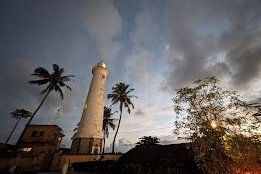
It’s quite clear why the Portuguese and then the Dutch chose Galle as a strategic location. The peninsula naturally offers protection against external threats. The walls encompass the entire old town, with the main fortifications and the sole entry gate facing north towards the mainland. The total width of the entry point is only 400 meters, making it easily defensible.
Within these walls, one can discover numerous colonial buildings from various periods. The most notable structures, aside from the fortifications, are the churches and the administrative buildings near the old entry gate. However, it’s challenging to highlight any specific building. For us, the experience was primarily about strolling through the city and soaking in the views.
Galle is often praised for its culinary offerings. The city is lively, with a plethora of dining options and a walkable old town. This was something we initially struggled to appreciate during our first days in Sri Lanka. Only after venturing into the countryside and realizing the difficulty of finding good food elsewhere did we come to fully value what Galle has to offer. Personally, Galle is the one place where I could have envisaged extending my stay.
Getting There
The World Heritage Site (WHS) encompasses only the fortification-enclosed peninsula. Within the walls, most hotels occupy historic buildings, so if you’re seeking a luxury or beach hotel, you’ll need to look outside the fortifications.
For those arriving in Sri Lanka by plane (or departing), you can arrange for a …
Keep reading 0 comments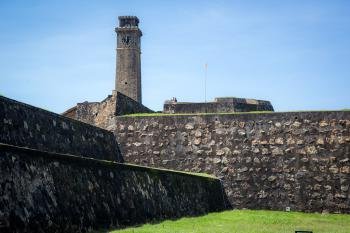
There's a really pleasant atmosphere in the streets of the old town of Galle. The architecture has that really interesting mix of European colonialism and South Asia. What I liked was that, although there are quite a few hotels and restaurants, not all of the Old Town felt touristy. There are still quite a few people living here and it has an authentic community.
There are great views along the coastline and it's worth walking the old fortifications to see that side of things.
Keep reading 0 comments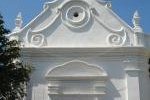
If the list of world heritage site is Sri Lanka national history book, it will definitely start with Anuradhapura as the starting point of Sinhalese culture and end with Galle as the starting point of colonial period. Galle is a unique cultural world heritage site as it is not related to Sinhalese culture or Buddhism at all; visiting Galle is truly another chapter of Sri Lanka history.
Galle is located in the small peninsular and surrounded by the mighty fortifications system built by Portuguese and developed by Dutch. Galle was the important port of call that was a part of spice maritime route; as the result, Gall has unique atmosphere of cultural exchange of local people, Muslim, Dutch and British. At present, Galle has been regarded as one of best-preserved colonial cities in South Asia.
During my visit, there was a large construction of new road surface, so Galle I saw was a big construction site with many piles of rock and sand for concrete road; however, these were unable to destroy the charm of Galle. People are extremely friendly, and each alley has its own characteristic, really similar with mosque area of George Town, Penang. The main attraction of Galle is the fort, the grandest is the northern part with comprise of three bastions, star, sun and moon, a real engineering wonder; however, the southern part is my favorite with extremely beautiful view of amazing Indian Ocean, lighthouse and lovely mosque. The city center around Dutch church …
Keep reading 0 comments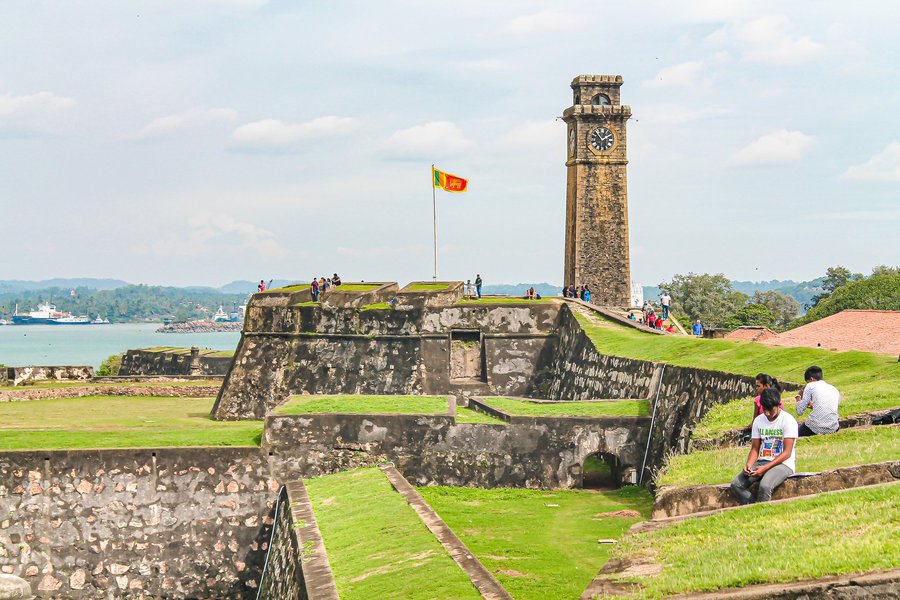
Galle Fort is a beautiful place, but is, of course, almost overwhelmed by the horrors of the Asian Tsunami. So many people there must have lost everything.
If you are in Sri Lanka you should undoubtedly visit this place.
Keep reading 0 comments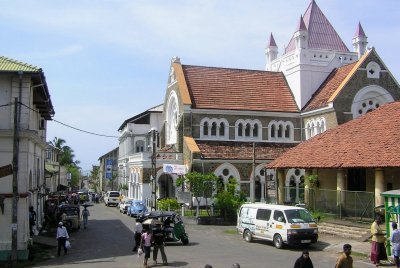
We have just visited post-Tsunami Galle (Mar 2005). If you are in Sri Lanka you should DEFINITELY try to go there - both because the locals need tourists and because the old town is as delightful as ever. As far as we could make out the majority of the old town escaped the direct effect of the Tsunami (it is both protected by the ramparts and partially built on a rise) and the guest houses and restaurants are fully working. Unfortunately the same cannot be said of the area outside the walls. Grass is growing on the cricket ground again and the railway and bus services are working but many of the structures facing the sea are destroyed.
The NGOs seem to have done (and are still doing) a wonderful job - but the same cannot be said for the Sri Lankan government - which seems paralysed by corruption, incompetence, lack of skills, inertia, bureaucracy and political infighting. Its suggested rule that no building can take place within 100 metres of the shore line (possibly including surviving buildings) is causing despondency and confusion among locals whose little piece of land is their only hope of a livelihood - suspicion abounds that such "forbidden areas" will find their way into the hands of big developers (politically connected of course!). Schools are not yet properly working and we heard of families whose children are unable to register anywhere (eg in other areas where they have relatives) because their papers have all …
Keep reading 0 comments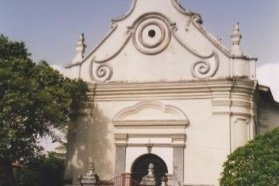
The Dutch connection makes Galle an interesting place to visit (for me, as I am Dutch myself). Especially the church (Groote Kerk) and some of the little streets looked very familiar. Hire a bike, and you feel like you are in Holland.
The new part of Galle is hell, but the old town I found quite charming (though very small).
Keep reading 0 comments
